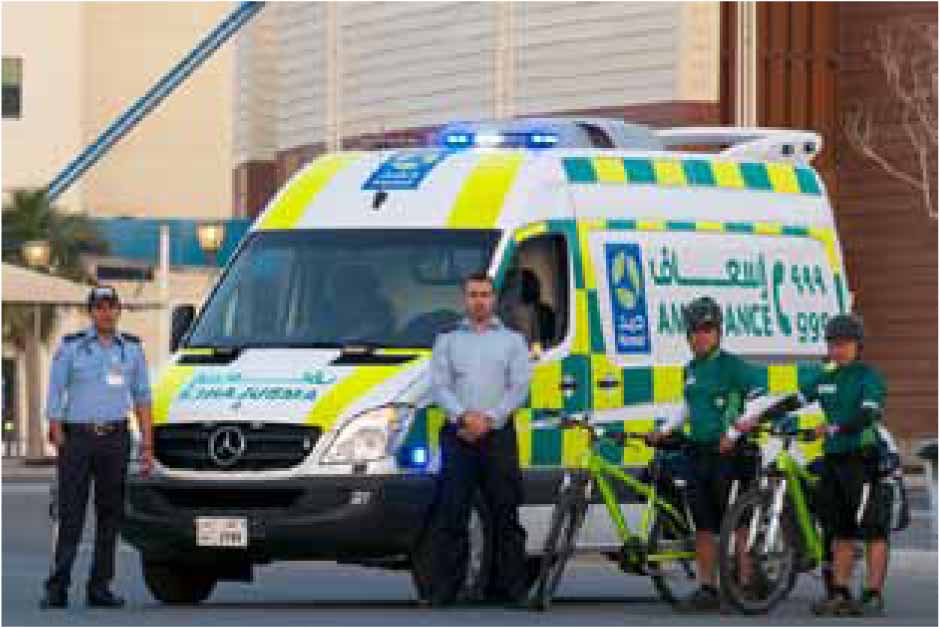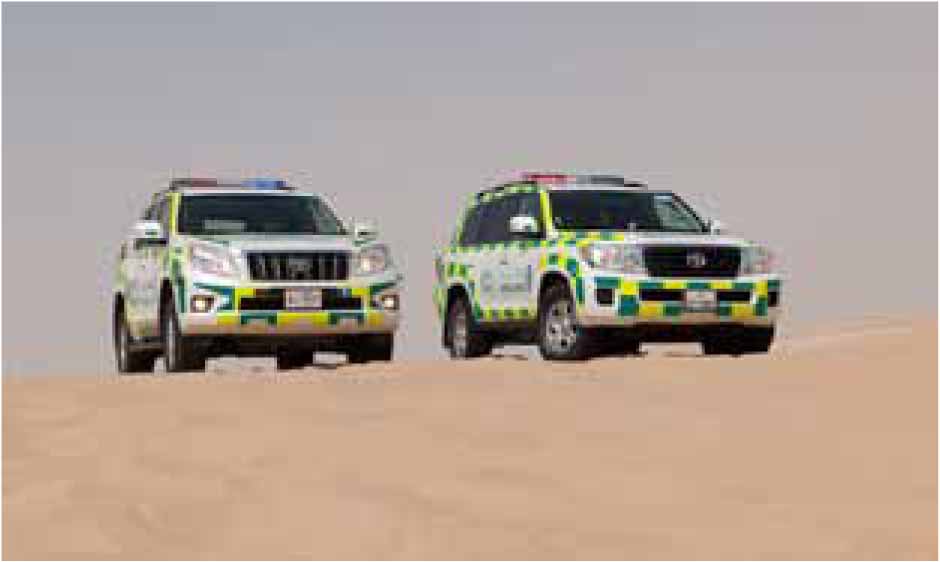Since the start of industrialisation in the beginning of the 20th century, processes and technology have evolved drastically. Technology that had been developed for a specific application was found to open new horizons in other domains. A good example is the use of sonar technology on military submarines which eventually found medical applications in medical imaging (Oakley, 1986). The paramedic profession is still considered to be a relatively young profession, and although the clinical scope of practice of ambulance staff has widened there have been few noticeable and significant changes in the way ambulance services operate as public service providers. There is, however, great variation in the way pre-hospital emergency care provision is delivered and organised from country to country due, for example, to historical, cultural, financial, and geographical factors.
Other industries are significantly more driven by profit, hence efficiency and reliability are aspects that have a direct and measurable financial impact, which acts as a driver for further developments. In healthcare it is a different story and parallels can be drawn differentiating the safety aspects of that particular industry in comparison to the rigorous safety measures imposed in other high risk domains such as the nuclear, petroleum, oil, and aviation industries (Hudson, 2003). Such measures have an undeniable significant cost but the expected indirect returns are even more substantial. So what is happening with ambulance services? Communication and transport have greatly improved with call centres, radios, smart phones (Bradley et al, 2012), physiological telemetry systems (Kim et al, 2011), Global Positioning Systems (GPS) (Liao, 2003; Satyanarayana et al, 2012; Kale and Dhok, 2013), and better adapted vehicles allowing rescue in diverse environments and situations (See Figures 1, 2and3), but what else could we improve in ambulance services by adopting processes and technologies from other industries?



Processes applied to ambulance service operations
Outside of the delivery of clinical care, an ambulance service can be viewed as a logistics operation organisation, or perhaps more accurately as a ‘patient supply chain’ system. This system brings together the many processes that support the delivery of clinical care to a patient; from traceability of consumables used on a particular patient, such as drugs, to ensuring that all equipment is correctly maintained and serviced in any given vehicle.
The ambulance service supply chain is complex, critical, high availability, and with important consequential impact of errors or omissions. It needs to maintain oversight of a very large matrix of locations and mobile points of care delivery.
‘The ambulance service supply chain is complex, critical, high availability, and with important consequential impact of errors or omissions’
The core process is the management of the inventory used, from consumables, through diagnostic equipment and patient handling equipment, to the vehicle itself. These inventory types all have a number of things in common: they have information that has to be maintained about them, their use has to be tracked and integrated with the patient experience (e.g. in a patient care record), they have to be available at all times to ensure that the full scope of clinical practice can be administered, and they have to be replenished when consumed.
Some simple examples best explain this:
Technologies applied to ambulance service operations
Across many industries solutions exist that can be applied to the process challenges faced within the ambulance service supply chain. These are a mix of manual and automated solutions that can potentially simplify processes.
RFID (Radio Frequency Identification) is in use across many industries for both complex and simple solutions (Attaran, 2007). By applying RFID tags to equipment in an ambulance the vehicle can be scanned to see what items are in the vehicle. Intelligent decision making can then be put into place. For example, a simple check of the last service date of the stretcher can be made and an alert sent to the maintenance team enabling them to plan the exchange and servicing of the item.
By grouping consumable items together based upon the type of clinical intervention and creating pre-packed kits, the number of items that have to be checked on an ambulance at the start of a shift are reduced dramatically. By putting these pre-packed kits into assigned locations on the vehicle, similar to the way engineers in factories use single minute exchange of die (SMED) techniques (McIntosh et al., 2000), the clinician has improved access to consumables. Although a manual solution, the supply chain gains dramatic benefits from this simplification. Less items and consistent location of them across the ambulance fleet improves efficiency and accuracy of stock checking and replenishment. With regards to automated solutions, by adding a breakable RFID tag to the pre-pack, its use can be monitored and a notification sent to ensure that its replacement is actioned. The same process can be applied to drugs consumption from an inventory perspective but also to drugs administration from a patient care perspective (Sun et al., 2008).
The electronic patient care record (EPCR) is in use in many ambulance services (Anantharaman & Swee Han, 2001). By monitoring the use of drugs and consumables electronically it becomes a simple step to integrate this information with the EPCR. As a result full traceability of drugs and consumables back to the manufacturer's batch number becomes easily accessible.
Motor vehicles already have sophisticated computerised systems in place which can be linked to a cellular network and thus communicate with a central database. Gathering this data enables rules-based decision making to take place with regards to vehicle dispatch (El-Masri and Saddik, 2012), guidance, traffic updates (Kale and Dhok, 2013), but also vehicle maintenance. For instance, the engine's oil level can be monitored and if it goes below a pre-defined level an alert can be sent and a mobile workshop dispatched to resolve the issue. By tracking the ambulance using GPS and also using telemetry the mobile workshop can go to the ambulance's location and top up the oil level, whilst minimising the amount of downtime incurred by paramedics and their ambulance.
Discussion
Various operational aspects of modern ambulance services can still be improved upon by adopting processes and technologies originally developed for application in other industries, however knowing exactly ‘what’ will remain a difficult question to answer as ‘we don't know what we don't know’. It can be seen from the examples mentioned earlier that different process solutions can be introduced to improve the quality of care delivered to patients and the efficiency of an ambulance service in general, whether it relates to clinical equipment packaging, monitoring of used consumables and drugs on a given patient, or the performance of an ambulance. Technologies already in place within other industries can be assessed and adapted to meet the needs of the modern ambulance service. Ambulance services should adopt the best solutions for their needs based upon a number of factors in relation to their environment. By adapting and connecting communications and analytical database systems a common infrastructure can be created drawing the most suitable solutions together into a single ‘Patient Supply Chain’ system. This ‘Patient Supply Chain’ enables ambulance services to focus on delivering the best possible access to effective care for patients.
Conclusions
This article has introduced the notion of the ‘Patient Supply Chain’ and presented several solutions borrowed from other industries, which have or will soon improve operational aspects of ambulance services. There are certainly more opportunities to uncover. We would like to open up a debate and encourage readers of IPP to submit suggestions and ideas of processes or technology observed in other industries that could improve logistical and operational aspects of ambulance services, ultimately allowing us to improve patient care and develop this ‘Patient Supply Chain’.
